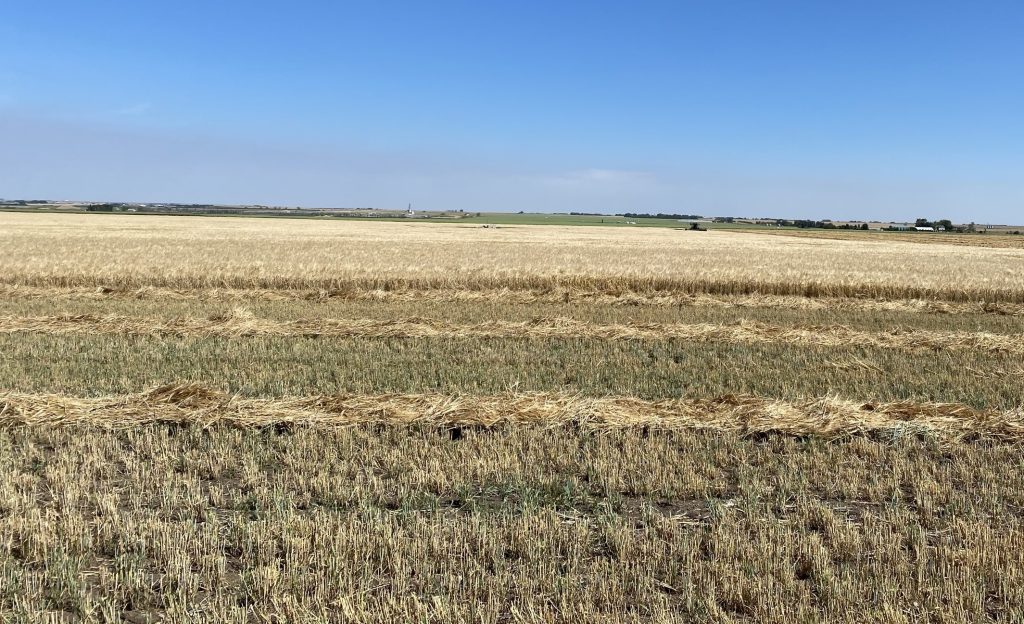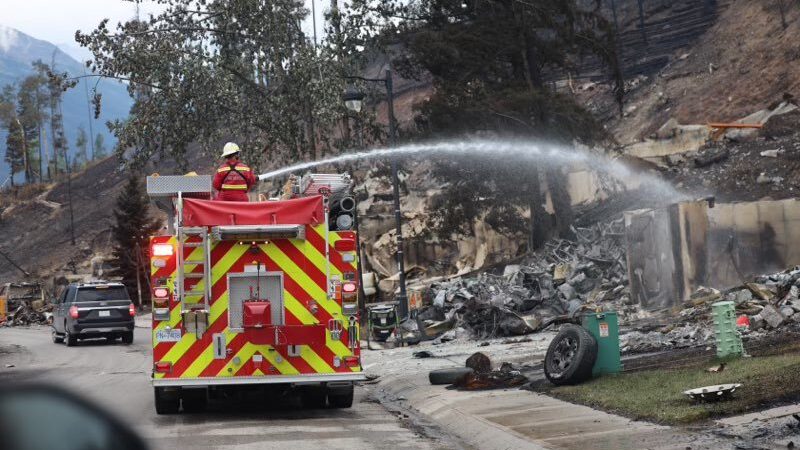Alberta’s dry conditions prompt creation of drought committee, spark worries about pests

Posted Feb 8, 2024 1:25 pm.
Last Updated Feb 9, 2024 10:23 am.
Another summer of dry conditions is on the provincial government’s radar prompting the formation of a water advisory committee, as experts begin preparing what they can do now and going into the future.
Numerous rivers in the province are at a record low levels, and many reservoirs are not meeting capacity expectations.
Now, in a bid to figure out some solutions and prepare, six people have been appointed to a board to discuss and plan how the province can prepare.
Okotoks Mayor Tanya Thorn is one of the people on the new board.
“My community, we’ve been a leader in water conservation for over 20 years, and that makes us one of the lower per-capita users of water,” she told CityNews. “I think where the drought provides us a great opportunity is that it provides an opportunity for this province to also be a leader in water management.”
The committee is expected to act as an independent board in helping the government conserve and manage water in drought conditions, while supporting rural communities, farmers, and ranchers.
Kerry Black, a researcher and professor with the University of Calgary, has said a lot of planning will need to be done to manage the shortfalls that are expected.
“Winter water restrictions certainly mean that we’re going face summer water restrictions and that cost of feed — not just for the crops that we’re looking at — the cattle farms that dominate parts of Alberta, those are also impacted dramatically by the lack of snow and the lack of water,” she said.
Thorn says many Albertans need to be ready for what’s likely to come.
“We saw last year, a lot of communities significantly restrict outdoor watering, or non-essential watering, or use of water, and I think we’re going to see a lot more of that in the coming year,” she said.
Southern Alberta is also unique when it comes to it’s drought situation, according to Thorn.
“Southern Alberta, in a lot of ways, we’re very unique when it comes to drought,” she said. “We’ve dealt with drought in varying degrees over the years, but we’re unique in that we have the smallest amount of water in the province, yet we have the largest part of the population.”
Melissa Story, the provincial wildfire information officer says its been a very unusual start to the years, with a bizarre amount of wildfire carrying over from last year.
“Even if we see average rainfall in the province, we’re going to see elevated fire danger, especially in the northern parts of the province,” she explained. “We left the fall with very high to extreme fire danger and we’re probably going to see that again in the spring.”
Victoria Ostendorf, the Wildlife Information Officer in High Level, agrees, and says crews up north very busy right now.
“Fire can dig deep into the ground, especially in this area, there’s deep layers of peat moss so not only does it dig deep, but it can travel as well and reemerge as a wildfire,” she explained.
There are currently 60 wildfires burning in the province.
WATCH: Below-average snowfall in southern Alberta not helping drought conditions: experts
The government is taking a united approach; in a statement, the Minister of Environment and Protected Areas, Rebecca Schulz, says when it comes to water, we are all in it together.
She adds that the committee will meet frequently to figure out what the province can do better to ensure water restrictions don’t have to be put in place.
However, the Alberta Wilderness Association (AWA) is out with a statement Thursday saying it isn’t pleased the province didn’t include any environmental groups on the new drought committee.
The organization says it’s especially disappointing because the government has made room to include industry on the board.
The AWA is asking the province to include more diverse representation, including Indigenous voices.
Dry conditions perfect for wildfires, bugs
While many have basked in the unseasonably warm temperatures this winter has brought, experts are warning it could mean big trouble for farmers.
Looking beyond the potential drought conditions from the El Niño situation, the mild winter is whipping up a perfect storm for locusts.
Boyd Mori is an assistant professor of Agricultural and Ecological entomology at the University of Alberta.
He says without the expected drop in temperature designated for the fall, grasshoppers could be a major problem this summer.
“It really does help to keep our insects in check, and so other regions of the world, if we think of the tropics or just other temperate regions, insects can have multiple generations a year,” he explained. “That probably allowed the female grasshoppers a longer time to lay eggs in the soil and because the grasshopper populations were so high last year, there’s probably a lot of eggs over-wintering in the soil.”
Mori adds cold snaps are beneficial in knocking out those agricultural pests that reside in the topsoil, and the lack of a sustained drop in temperatures and snow means the chance of increased pests is high.
Although it’s not an exact science, he says the goal is to reach temperatures of – 20 C for about two weeks.
“Even if the air temperature is -20 C, -30 C, the ground temperature might only be -10 C underneath a good snow pack and so, in those temperatures, the insects can survive,” Mori explained.
About 15 municipalities across southern Alberta declared an agricultural disaster last summer.








